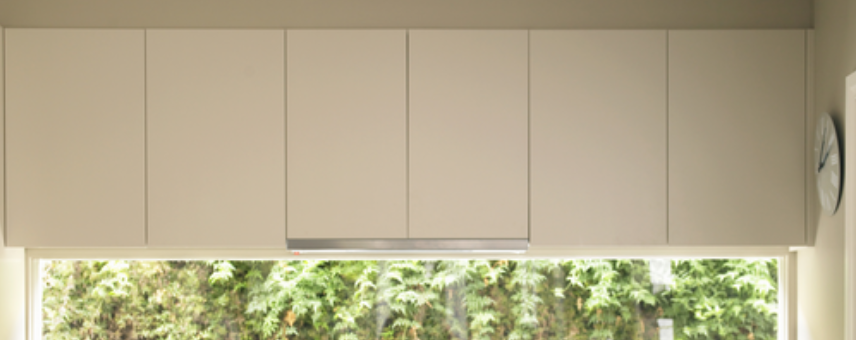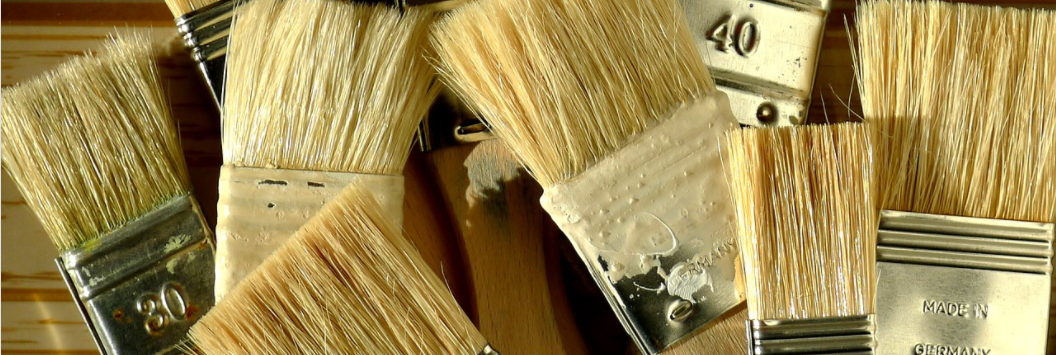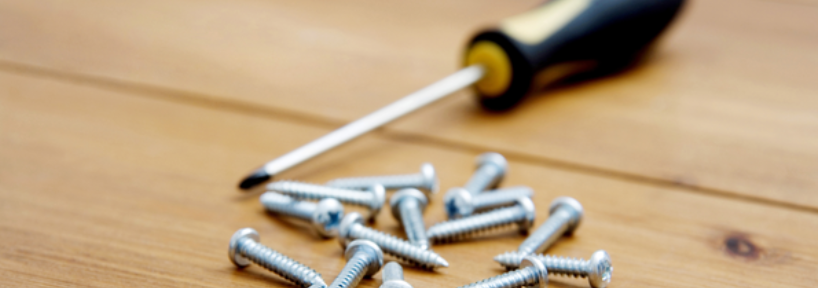Painting Mobile Home Cabinets To Give Your Storage A Facelift
There are a number of very good reasons why you would or should consider painting mobile home cabinets. Most mobile home owners are not scared of a little DIY home-improvement and painting cabinets is a relatively easy and inexpensive makeover that will contribute tremendously to your home’s appeal.
A new face on bland cabinets
Let’s face it, most mobile homes definitely weren’t built with style as a chief concern. Their cabinets are more often than not made of fairly cheap materials such as laminate or plywood and have no kind of aesthetic finishing. Painting cabinets (and almost any part of the home) is a great way to get a new look with relatively little effort and expense.
Kitchen makeovers are very popular right now because it’s one of the areas you spend the most time. And naturally, you want the area you prepare food to look clean and well-looked after. In this article, we’ll focus on updating your kitchen cabinets, but you can apply this information to painting cabinets throughout your home.
Painting mobile home cabinets to make them more durable
Kitchen cabinets take a lot of abuse over the course of their everyday existence. Not only are they exposed to a lot of heat, especially near the oven, but they hold kitchen utensils that can easily dink or scratch them besides regular use. Painting mobile home cabinets using high-quality primers and paints can improve your cabinets’ resistance and lifespan.
How to choose a good paint and primer for your kitchen cabinets
Primer
A primer is just as important as your paint. It ensures that the paint sticks to the surface, improves the durability of the coat, and protects the surface being painted even more. On top of that, a good primer will also help remove stains. If you want to skip the sanding beforehand, you can find some primer products that specify “no sanding needed.”
Zinsser and B.I.N have some excellent products like these and are generally some of the best brands to buy. Here is a link to the Zinsser B.I.N Shellac Primer, a primer that we (and most others) recommend. If you want to be even lazier you can get a bonding agent that you mix directly into the paint, although we recommend the former approach.
You also shouldn’t need to prime wooden cabinets unless you want to hide stains.
Paint
As the main star of this little project, choosing the right paint is very important. Your local hardware store’s staff will be able to advise you properly on what paint to buy. Most DIY-ers use either a latex or an oil-based paint that is glossy or semi-glossy.
Latex paint is especially durable and will give a good layer of protection as well as survive the daily trials of use better than most paints.
When it comes to style, it’s really up to you. We should mention that white kitchen cabinets are not only in style right now, but look good in most situations. You almost can’t find a kitchen cabinet repaint where the person didn’t go with white.
How long will it take to finish painting my kitchen cabinets?
This is a very good question. As with most DIY projects, it depends on how thorough you want to be and how much time and effort you can commit to the project. Another thing that might have a huge effect is the specific drying times for the products you choose. A final factor is your climate, especially the humidity. The hotter and dryer it is the sooner the coats will dry or cure. If you live in colder or more humid areas you might want to give it a bit longer just to be safe.
Whatever you choose, there are three non-negotiables:
- The waiting time for the primer (usually 12-24 hours)
- The waiting time between painting coats (a few hours for each coat, usually 2)
- The final waiting time after all your coats have been applied (1 to 3 days)
As you can see, this could take up quite a lot of time. Some people end up taking in a week or more. However, it depends heavily on the size of your kitchen and how thorough you want to be.
Having a plan or schedule according to which you work will help a lot. For example, this blogger gave a handy breakdown of how she timed her coats. We will outline this more in the step-by-step guide, but a pattern should already become apparent to you.
We recommend that for optimal results you put on at least one coat of primer, two coats of paint, and sand them in between.
What do you need?
- Screwdriver: You will need this to remove and add the hinges.
- Blue painter’s tape: To cordon off the painting area and your drop cloths.
- Drop cloths: Reusable canvas drop cloths are what we recommend. They don’t slip as easily when you walk on them and you can use them over and over again. Plastic is also acceptable, but consider taping them to the floor.
- Sandpaper: Don’t get anything rougher than 1500 grit sandpaper. You can even go finer. It’s literally just to give the primer and the paint a little more grip.
- Old cloth: You are going to use this to clean off the dust and grime from your cabinets.
- Mineral spirits: This is also to properly clean the painting area with.
- Ammonia: To follow up with after the mineral spirits.
- Degreaser or TSP: You don’t want any grease trapped in the material to seep through to your paint.
- Paintbrush: This is definitely not a job for a roller, most of the surfaces will be small in any case. Make sure you have both small and larger paint brushes.
- Paint: If you aren’t sure what paint to buy, you can’t go wrong with latex.
- Primer: Your local hardware store will be able to direct you to an appropriate primer. Read our section on this topic above for our advice.
- Polyurethane varnish (optional): This is another optional product that you can use to seal your paint job and protect it (and your cabinet) even further. There are oil and water based types. We recommend water as oil tends to slightly yellow with time. Also, take note whether it is a varnish that should be applied with a brush or wipe as there is a difference.
Step-by-step guide
Before you begin
Hold on a minute! We know you are very eager to have a brand-new looking kitchen. However, as is often the case with a DIY project, it might save a lot more time to stop for a moment and think things through.
For one, you need to decide what you are painting. If you are only painting the doors, it is less work but might leave you with an unfinished or uneven look (even if you are painting the same color).
Secondly, although it might be unseemly for a while, we recommend you loosen and remove ALL your cabinet doors. This way you can divide your process so that you prime, paint, and sand all in one big go. You can then also take them outside or in the garage so that you don’t use your home or kitchen for sanding and painting work that might get messy.
If you don’t do it all in one go you should at least do all the top level cabinets first. Else you might damage or dirty the bottom ones after finishing them.
Lastly, as a bonus tip, take a marker and label the cabinet doors. This is to make sure you put them back in the right place without having to mix and match.
Painting mobile home cabinets step-by-step
- First things first. Take the screwdriver and loosen (all) the kitchen cabinets. It shouldn’t be necessary to remove them from the doors themselves as well. We recommend you put them all next to each other on the drop cloth for the easiest way to work. It’s also possible to paint the cabinets while the doors are still attached, it’s just a bit harder.
- Next, mix the ammonia with equal parts water. Use the mineral spirits and cloth and clean the surface of the cabinet door(s). Then use the ammonia mixture to finish the job. If you want to be extra careful you can now use the degreaser or TSP for extra cleaning.
- Take the sandpaper and gently roughen the surface. You want to be especially careful with laminate cabinets as removing the laminate layer completely is not ideal. Just do enough so that it has some texture. Use one of the clean paint brushes and another cloth to wipe away the dust. This is very important as loose dust can interfere with the primer and paint. Do steps 2 and 3 for the front and back.
- Now it’s time for your first round of “painting” get your brushes out and the primer. Prime the surface of each door and let it dry according to the time specified by the product.
- Once the primer coat has dried you can now optionally give it another light go-over with the sandpaper. Be careful not to remove the primer coat, just give it some texture.
- Finally, it’s time for the first coat of paint. Dip your brush in a generous amount of paint and make as long strokes as possible while going over previous work as little as possible for best results. After all, we are going to do a second coat.
- Since you have time left for the cabinet doors it dry, it’s the perfect time to paint the cabinet boxes themselves. Use the painter’s tape to cover the corners where the boxes meet the wall or anything else you don’t want to mess paint on. Also, remember to secure the drop cloth to the floor if you haven’t done it yet. This will stop it from moving and properly seal off the floor corners where paint is always likely to drip in.
- This is also why we recommend that you remove all the cabinet doors at the same time. Now you can leave the first coat of paint and primer to dry properly. If your paint has a short drying time, or you have enough time left in the day you can already do the second coat of paint with an optional sanding in between. Just remember to properly clean the dust off before attempting the second coat. The same goes for the cabinet boxes.
- From here on out, it’s pretty much repeating what we have already done. Now that the front is finished you can turn the cabinet doors over and prime the back. Just as before, you can then lightly sand again, paint the first coat, wait for it to dry, and then paint the second coat.
- After applying the second, and final, coat you should let it rest for at least a full 24 hours. Some even leave it up to 3 days. You can also choose to use a paint sealer or varnish on your cabinets now. You still have to wait until the paint is completely dry and for the best results you might need to once again finely sand the surface, taking care not to completely remove the paint. The varnish itself will also require more than one coating, the number of which depends on your brand. Generally, brush varnish needs 2-3 coats that each need to dry overnight.
That’s it! All that’s left to do now is to fasten the doors back to the cabinet boxes. This should be a fairly straightforward task as the cabinet boxes still have their screw holes.
Painting mobile home cabinets can give you the look you always wanted
We hope that this guide helps you achieve the modern, clean, and brand spanking new kitchen look you are after. Although not a particularly difficult project, as you can see, repainting kitchen cabinets might take up quite a lot of time. Planning is key to speed up the process as much as possible and end up with a positive result.




